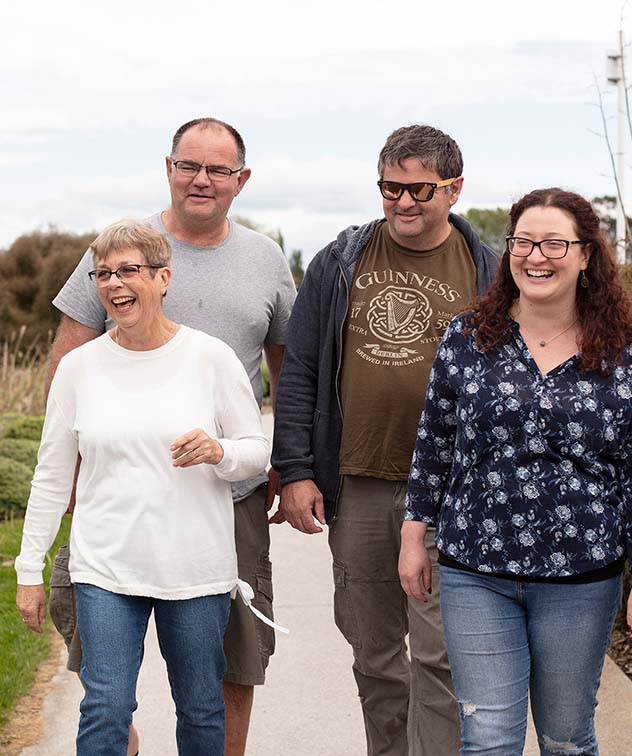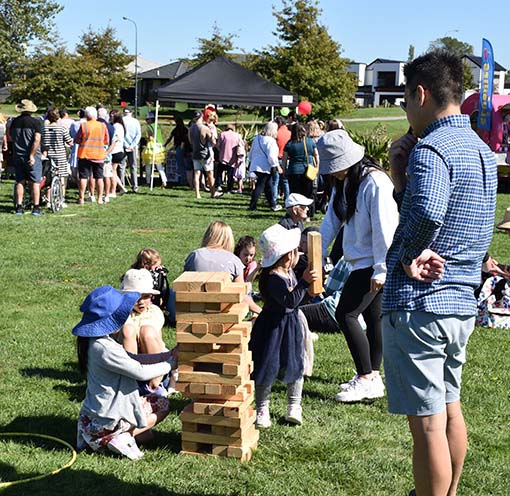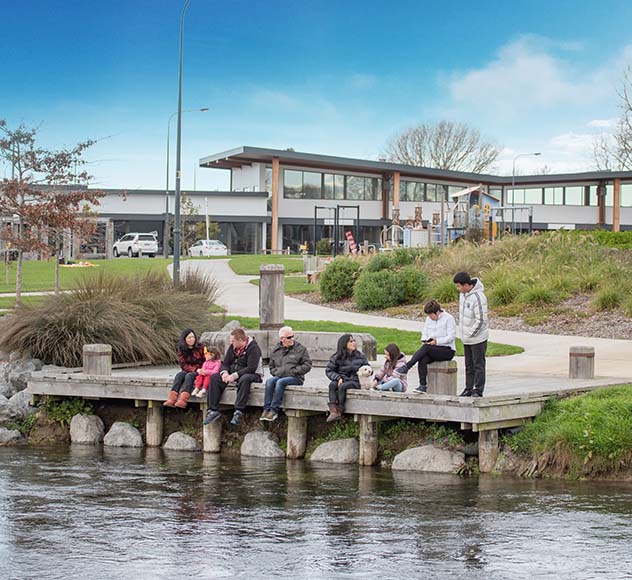Living in a community where you know your neighbours and can walk out of the house, wave at them, stop for a chat, and trade recipes or gardening tips, is like having extra friends living right next door.
And with many of us now returning to our busy daily lives after having spent the holidays connecting with our family and friends, it can be easy to find ourselves caught up in the whirlwind of tasks, leaving little time to connect with others and potentially leading to a sense of isolation and loneliness.
Let’s explore how we can maintain these social connections throughout the year by looking at the three main benefits of living in a connected community.
1. Make new friends
Whether you’re a new mum, recently retired, or simply seeking connections amidst a busy schedule, building relationships that align with your current situation can do wonders for your well-being. A huge benefit of living in a connected community surrounded by like-minded people is that there is a great opportunity to make new friends. But, you might wonder, how do you meet these potential friends easily?
One way is to attend community events where you can mingle and get to know your neighbours better. Community events are a fun and engaging way to get out of your comfort zone and meet new people in your neighbourhood who share similar interests as you.
Another way to meet people is by volunteering. By working alongside other volunteers in your neighbourhood, you can make a positive impact on your community. This can be a rewarding experience and who knows, you may end up making some new friends in the process!

2. Sense of belonging

Amid our busy lives, finding the time and energy to connect with others, even those just over the fence, can be challenging. This might leave us feeling isolated and craving a sense of belonging. But here’s the good news: Living in a connected community can open the door to making these connections, even when life keeps us busy.
Whether it’s joining a social group, attending community events or simply chatting with your neighbours, these opportunities can provide a real sense of belonging and help form support networks with those around us. With these support networks in place, it will be easier to come together as neighbours, especially in times when sticking together matters most.
3. Safety & support
Living in a community where everyone looks out for one another creates a safer and more secure environment. Having people who keep a watchful eye on the community can help protect against crime and by being aware of what’s going on in the neighbourhood, neighbours can help deter potential criminals and keep each other safe.
Along with safety, living in a supportive community can provide a sense of comfort in times of need, whether it’s helping to look for a lost pet, lending some gardening tools for the day, or providing support during an emergency. Knowing that you’re surrounded by neighbours who are happy to help out can make all the difference, especially if you’re new to the area or don’t have family nearby.

So, how do we promote community connectedness in Silverstream subdivision?
Community is very important to us here at Lime Developments, and we actively encourage strong community connection in Silverstream subdivision through the following:
Purposeful
Public Spaces
We believe that public spaces are not just physical places, but also the heart of a community, where people can meet, socialise, and build connections with their neighbours. That’s why we thoughtfully designed Silverstream with open green spaces, parks, and reserves to create a space that encourages community connectedness.
Silverstream
Social Club
We are proud to support our resident-led local social club in planning community events to bring neighbours together such as the meet your neighbour night, duck race, garage sale trails and much more!
Supporting Our
Neighbourhood
We are also supporters of North Canterbury Neighbourhood support, whose mission is “creating safe, connected, and resilient communities”. By working with them, we’re helping to make our neighbourhood a safer and friendlier place to call home.
Community
Hub
The presence of a community hub at The Sterling retirement village serves as a base for the community to come together in the case of a civil defence emergency ensuring a coordinated response and support network for all residents.
Here’s what our residents say about connected living in Silverstream subdivision
My favourite part of living in Silverstream is probably the people—I just love people and there’s always help for whoever needs it. We look after each other.
Since living here we’ve built up quite a lot of friendships, it’s just one of those areas where people are like-minded. It’s hard for me to go for a walk and not be an hour or two late coming home because I get caught up talking to people!
Shirley
What we really love about Silverstream is that there are organised events. We have movie nights, quiz nights, meet the neighbour evenings and duck races.
They’re great for the kids and it’s fantastic for getting out and meeting other people that have got children and meeting your neighbours.
Nicky & Hayden
To wrap up, it’s clear that living in a connected community provides many opportunities for social connection. It allows you to form new friendships, feel a sense of belonging and feel safe and supported in your environment.
Silverstream subdivision truly embodies the essence of a connected community, echoed by stories from our residents. Here, it’s more than just houses—it’s a thriving community where neighbours become friends and everyone feels at home.
Ready to experience the joys of living in the connected community of Silverstream?

